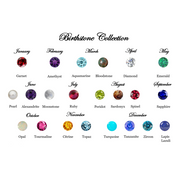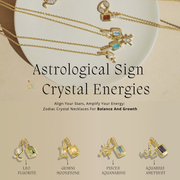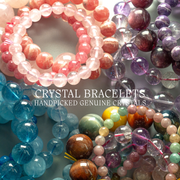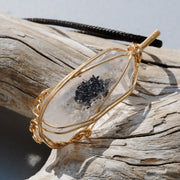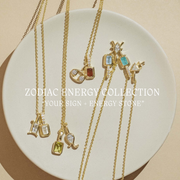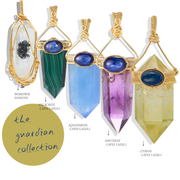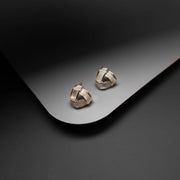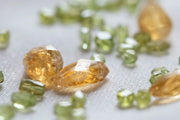Turquoise History
Ancient Origins
Turquoise has captivated humanity for over 7,000 years, making it one of the oldest gemstones in human history. Ancient civilizations such as the Egyptians, Persians, and Native Americans valued turquoise not only for its vivid blue-green hue but also for its mystical and protective powers. Archaeologists have uncovered turquoise jewelry in Egyptian tombs dating back to 3000 BCE, often placed near royal mummies to safeguard their spirits in the afterlife. The gem's distinctive color was believed to symbolize the heavens and divine truth.

Cultural Significance
Across cultures, turquoise became a universal symbol of protection, wisdom, and nobility. In Persia (modern-day Iran), it adorned palace domes and royal crowns as a symbol of power and immortality. Native American tribes such as the Navajo and Zuni incorporated turquoise into amulets, belts, and ceremonial tools, believing it connected the sky and the earth. Tibetan monks wore turquoise as a talisman to promote spiritual awareness and balance between the heart and mind.

Symbolic Uses Through History
Throughout history, turquoise was thought to bring good fortune and ward off negative energy. Medieval Europeans believed the stone protected travelers from falls and accidents, while horse riders wore turquoise to prevent injuries. In ancient China, turquoise was considered a stone of prosperity and longevity. Its enduring popularity across continents underscores its timeless appeal as both a jewel and a spiritual safeguard.

Table of contents
Origin

- Iran (Persia) – Persian turquoise, especially from the Nishapur mines, is celebrated for its rich, sky-blue hue and fine, uniform texture.
- United States (Arizona and Nevada) – American turquoise often displays striking brown or black matrix patterns, giving each stone a unique spider-web effect.
- China – Chinese turquoise is abundant and widely used in modern jewelry; its color ranges from pale robin-egg blue to greenish tones, making it highly versatile in design.
Feature
- Chemical formula: CuAl6(PO4)4(OH)8·4H2O
- Mohs hardness: Turquoise ranks between 5 and 6, meaning it requires gentle care to prevent scratches and surface wear.
- Color: Turquoise varies from light sky blue to greenish-blue, influenced by the amount of copper (which produces blue tones) and iron (which adds green hues). Color intensity can also fade when exposed to heat, sunlight, or skin oils over time.
- Symbolism: This gemstone represents serenity, truth, and spiritual grounding. Across many cultures, it is believed to protect travelers, bring good fortune, and strengthen communication and empathy.
-
Chakra:
Throat Chakra – Enhances self-expression and honest communication.
Heart Chakra – Promotes inner calm and emotional balance.
-
Zodiac:
Sagittarius
Pisces
Benefits
Emotional Balance and Stress Relief
Turquoise is known for its powerful calming and stabilizing energy. It soothes emotional stress, helping one release anxiety and find inner peace. Many believe wearing turquoise jewelry promotes emotional resilience, optimism, and better mood regulation.
Physical Healing and Detoxification
In crystal healing, turquoise is said to support the immune system and aid in detoxifying the body. Its purifying energy is thought to balance the body’s pH levels and alleviate inflammation or respiratory problems. Whether worn as a pendant or placed on the skin, it’s a traditional stone of vitality and renewal.
Communication and Self-Expression
Linked with the throat chakra, turquoise encourages clear and confident communication. It’s often recommended for people who struggle to express themselves or speak in public. Spiritually, it strengthens intuition and honesty—allowing the wearer to articulate truth with compassion.
Protection and Good Fortune
For centuries, travelers carried turquoise as a protective amulet against accidents and negative energy. It’s believed to absorb harmful vibrations and shield the wearer from physical and emotional harm. Even today, turquoise is worn as a lucky charm for prosperity, career success, and safe journeys.
Spiritual Connection and Growth
Turquoise bridges the gap between the physical and spiritual worlds. Meditators use it to deepen mindfulness, heighten spiritual awareness, and connect to higher consciousness. Its tranquil vibration encourages balance between mind, body, and spirit, fostering self-acceptance and enlightenment.
Type
Persian Turquoise
Originating from Iran, Persian turquoise is famed for its intense robin’s-egg blue color and minimal veining. It has been a prized gemstone for royalty for over 2,000 years and remains one of the most valuable varieties today, often used in fine jewelry and antique collections.
Sleeping Beauty Turquoise
Mined in Globe, Arizona, this variety is celebrated for its pure, vibrant sky-blue hue and lack of visible matrix. Its consistent color makes it a favorite for high-end jewelry and modern designers, symbolizing elegance and simplicity.
Chinese Turquoise
Chinese turquoise exhibits diverse shades from pale blue to green, often with intricate web-like patterns. It’s widely available and appreciated for its natural beauty and affordability, making it popular in contemporary gemstone markets.
Tibetan Turquoise
Mined from the Himalayas, Tibetan turquoise often carries dark brown or black matrix lines that enhance its rustic charm. In Tibetan culture, it’s considered a sacred stone of life and is passed down through generations as a symbol of protection and spiritual awakening.
Care & Maintenance
Cleaning
Clean turquoise gently with a soft, damp cloth and mild soap if needed. Avoid ultrasonic cleaners, chemical detergents, or steam cleaning, as these can damage the porous surface and alter its color.
Storage
Store turquoise separately in a soft pouch or jewelry box lined with fabric. Keep it away from heat, sunlight, or dry environments to prevent discoloration and cracking.
Handling
Avoid exposing turquoise to lotions, perfumes, or oils, as its porous nature easily absorbs substances that may dull its shine. It’s best to put on turquoise jewelry after applying makeup or perfume, and remove it during exercise or swimming to preserve its natural luster.
FAQs
Q: Is turquoise a birthstone?
A: Yes, turquoise is the traditional birthstone for December, symbolizing prosperity, peace, and good fortune.
Q: Can turquoise change color over time?
A: Yes, due to its porous nature, turquoise can gradually change color when exposed to skin oils, sunlight, or moisture. Proper care helps maintain its original hue.
Q: How can you tell if turquoise is real or dyed?
A: Genuine turquoise has a matte or waxy luster and may show natural matrix patterns, while dyed or fake stones often appear overly glossy or uniformly colored.
Q: Is turquoise suitable for everyday wear?
A: Yes, but with care. Since it’s softer than many gems, turquoise jewelry should be worn mindfully and cleaned gently to avoid scratches or damage.
Q: What does turquoise symbolize spiritually?
A: Spiritually, turquoise represents protection, healing, and truth. It’s said to align the mind and heart, allowing clear communication and emotional harmony.
Final Thoughts
Turquoise is much more than a decorative gem—it’s a timeless symbol of protection, peace, and personal power. Its vibrant color reflects the harmony of earth and sky, making it a favorite among those who value both style and spiritual meaning. From Persian royalty to Native American artisans, turquoise continues to enchant the world with its beauty and depth. Whether worn as jewelry, kept as a healing crystal, or used for meditation, turquoise remains a cherished stone for those seeking balance, serenity, and timeless elegance.

